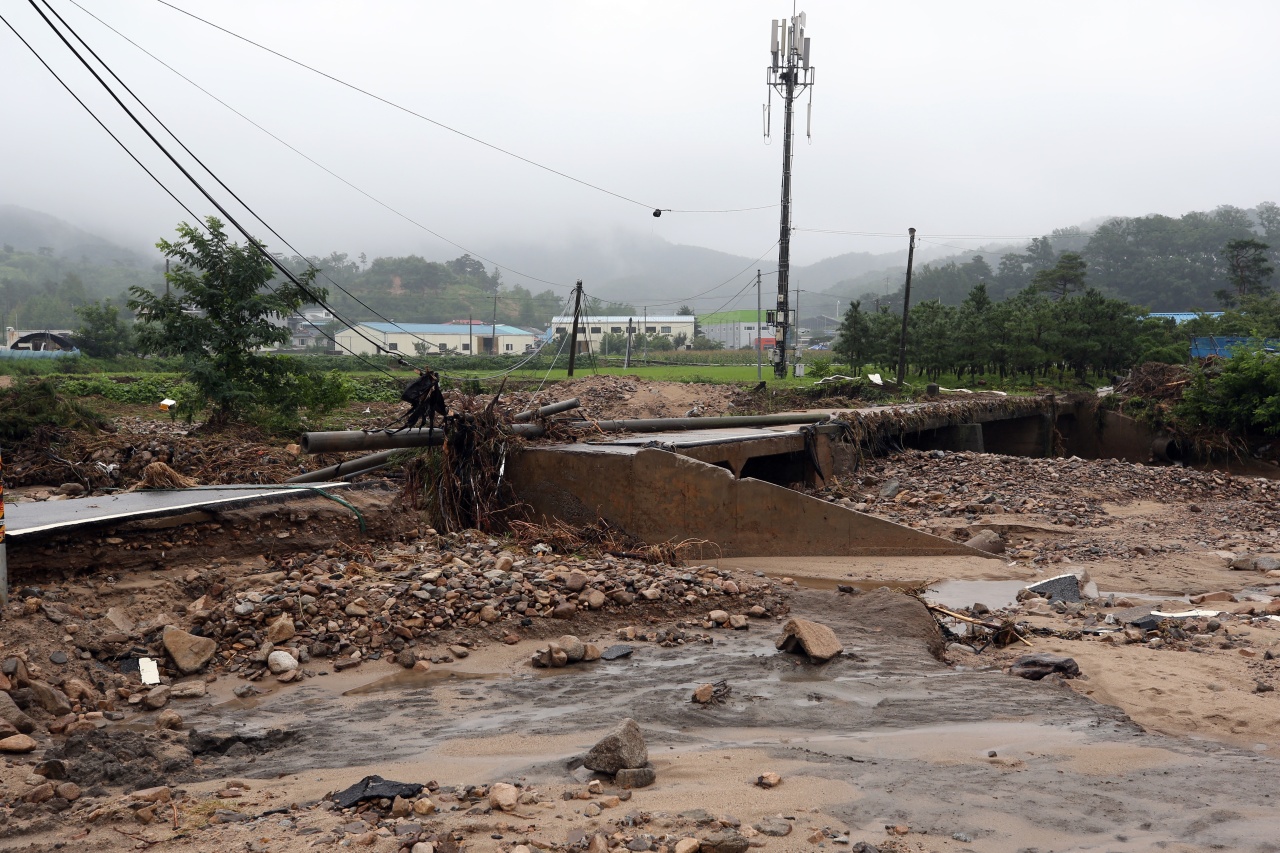 |
A road in Chungju, North Chungcheong Province, is pulverized Thursday due to heavy rainfall in the region. (Yonhap) |
Heavy rainfall continued for a sixth day Thursday, with the capital region and nearby provinces reporting additional property damage and one death.
From 6 p.m. Saturday to 9 a.m. Thursday, the capital, Seoul, and nearby Gyeonggi, North Chungcheong, South Chungcheong and Gangwon provinces received as much as 690.5 millimeters of rain, mostly accompanied by thunderstorms and strong wind, according to the Korea Meteorological Administration.
The weather agency said the rain can be expected to slow down in Seoul, Gyeonggi Province and Gangwon Province in the afternoon, and in North and South Chungcheong provinces later on, but will likely start again Friday.
Heavy rain advisories and warnings were still in effect for many of the affected areas as of 10 a.m. Thursday.
The six-day streak of torrential rain has left a total of 16 people dead and 11 missing, according to the Central Disaster and Safety Countermeasure Headquarters.
The death count rose by one from a day earlier as a man in his 50s was found dead in Hongcheon, Gangwon Province, four days after he went missing.
More than 4,900 people from 1,598 households were forced to evacuate, and 3,019 people from 952 households have yet to return to their homes. In Gangwon and Gyeonggi provinces, 2,053 people stayed at schools, community centers and gymnasiums Wednesday night due to the risk of flooding.
Property damage also continued. A total of 5,177 incidents have been reported, with 2,617 concerning private property.
More than 1,400 residential buildings were flooded, and 1,055 damage reports were filed for barns and storage facilities. The downpour also flooded 8,065 hectares of farmland.
Around 1,043 incidents of damage were reported on roads and overpasses, while 363 streams were flooded and 396 landslides were reported.
Emergency recovery work is around 68.5 percent complete, the central disaster response team said. To repair damaged property, 53,667 civil workers, firefighters, police officers, volunteer workers and military service members have been dispatched with 6,534 excavators and water pumps.
Meanwhile, the country’s southern regions are reporting extreme summer heat and tropical nights. A tropical night occurs when the lowest temperature between 6 p.m. and 9 a.m. is above 25 degrees Celsius.
The low on Jeju Island, the southernmost provincial region of South Korea, was 29.7 degrees Celsius on Wednesday night. It is the highest tropical night temperature ever recorded for the island since the compilation of data began in 1973, the weather agency said.
By Ko Jun-tae (
ko.juntae@heraldcorp.com)








![[Today’s K-pop] Blackpink’s Jennie, Lisa invited to Coachella as solo acts](http://res.heraldm.com/phpwas/restmb_idxmake.php?idx=644&simg=/content/image/2024/11/21/20241121050099_0.jpg)